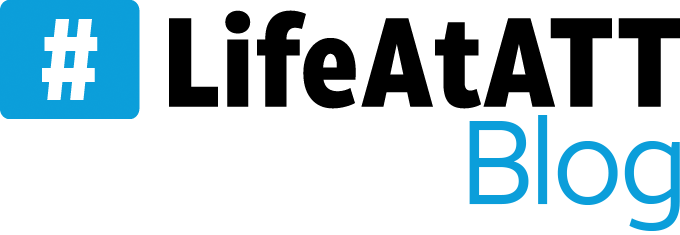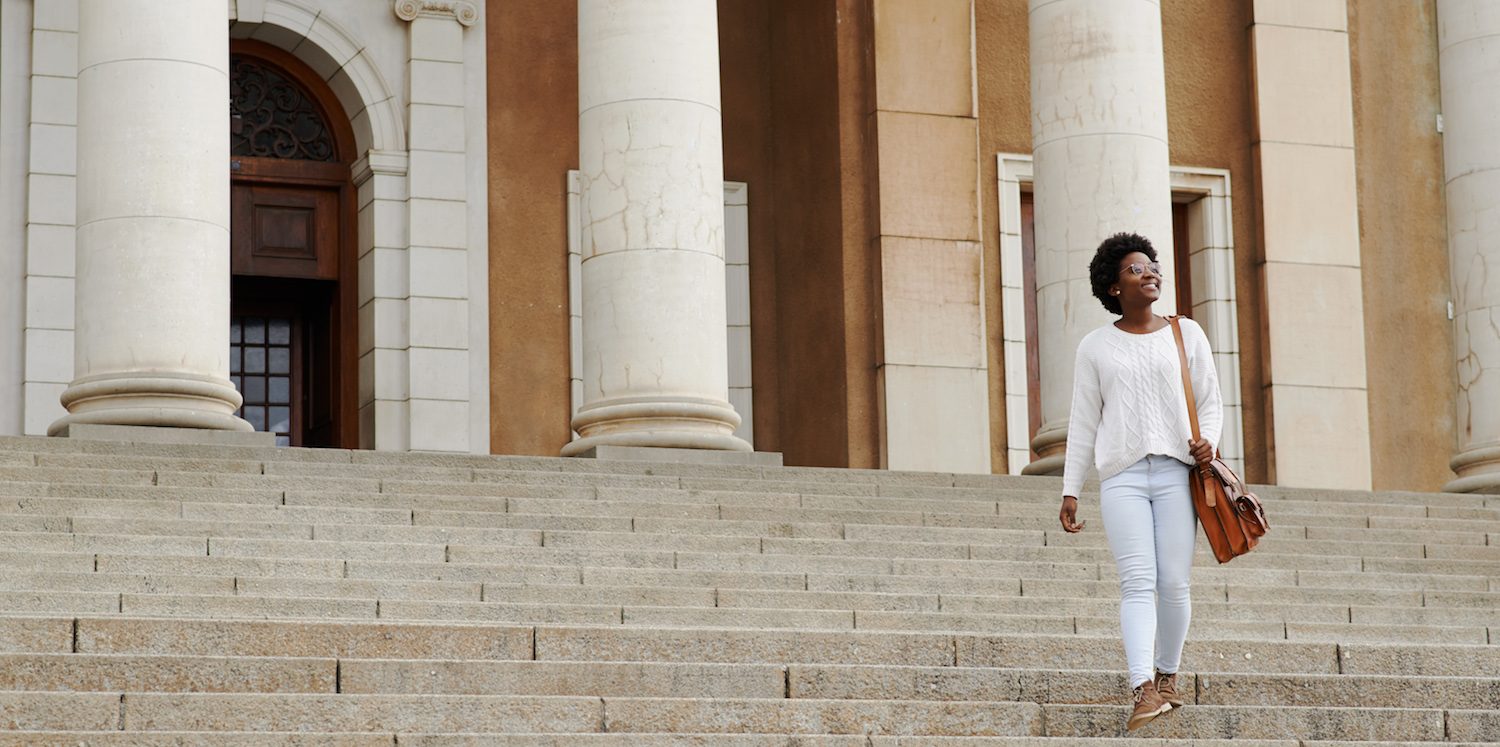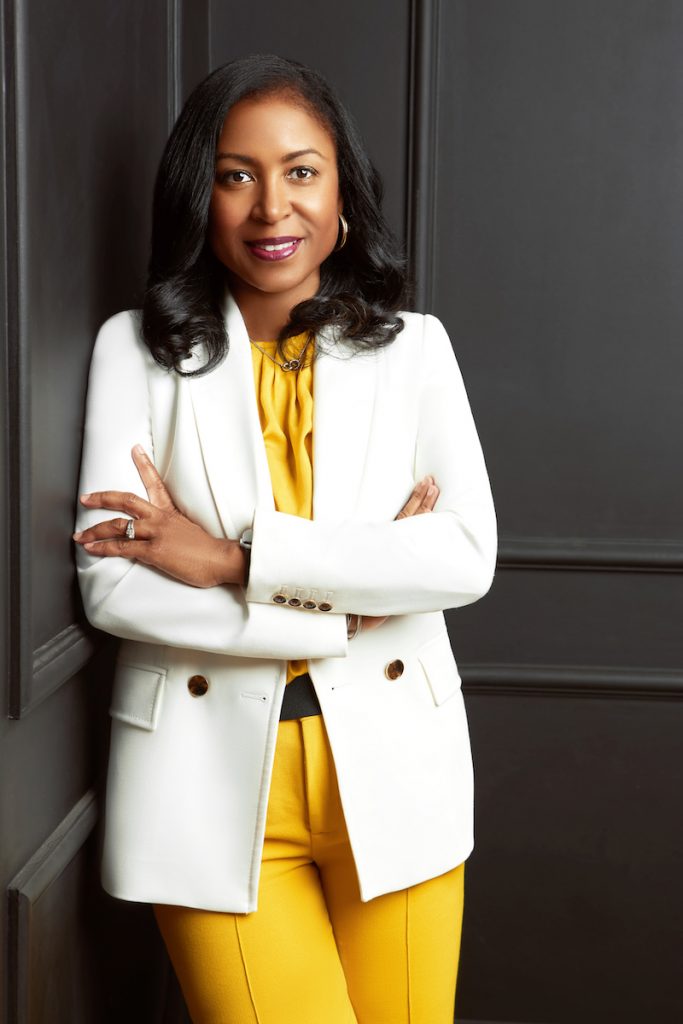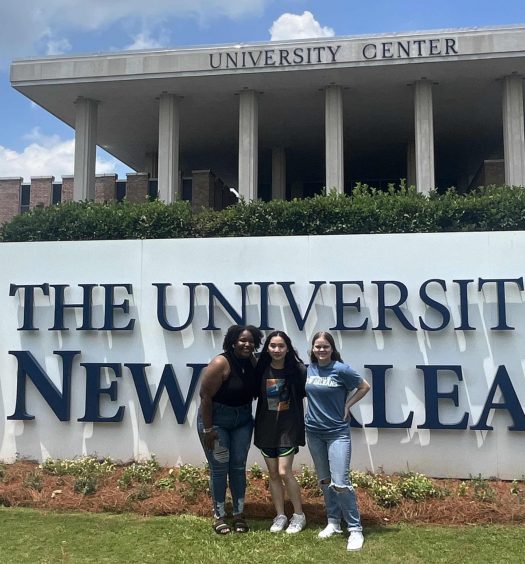In the fall of 2020, students from 17 Historically Black Colleges and Universities (HBCUs) made history. These young innovators and future leaders took part in our first ever HBCU Innovation challenge, building 5G solutions for causes that mattered most to them. Healthcare, education and community relief programs were just some of the topics covered by students looking to make a true impact through technology.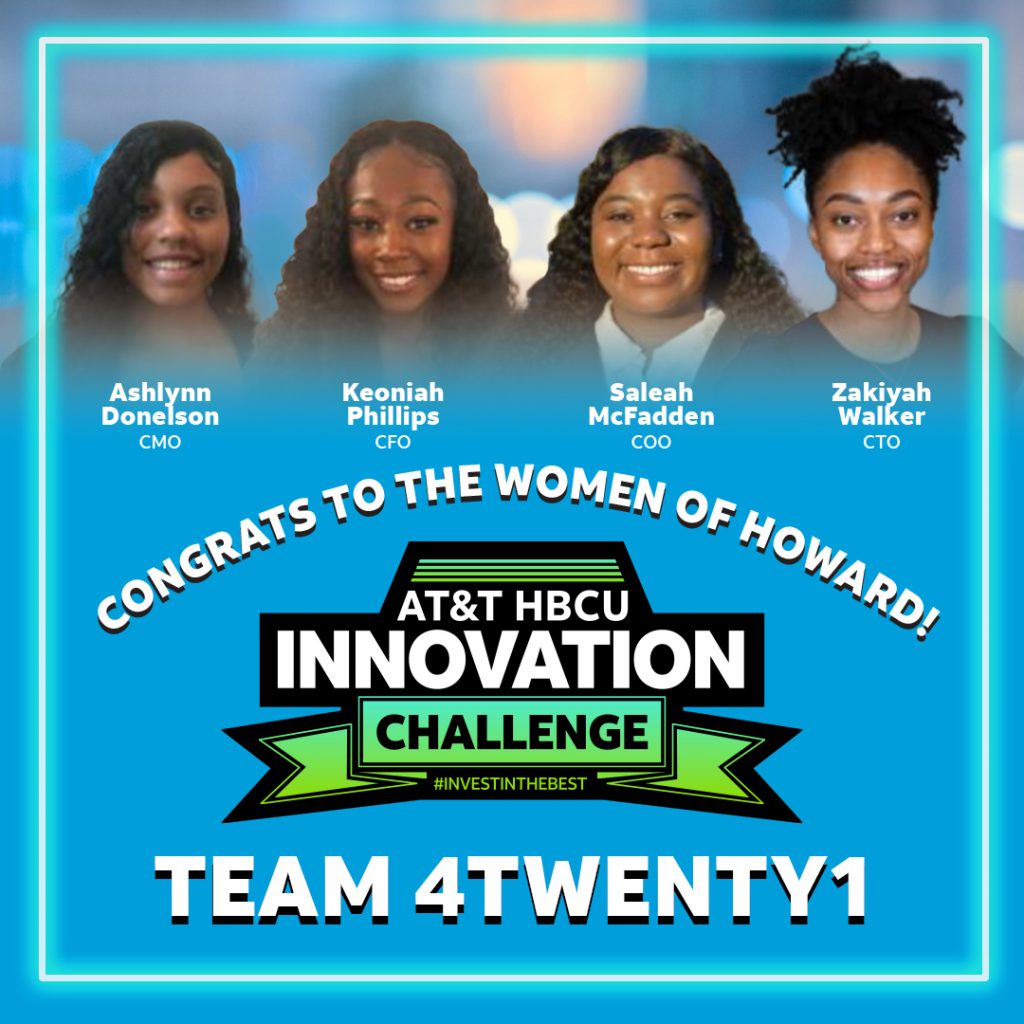
Picking a winner wasn’t easy. Howard University’s team “4twenty1” came out on top – a group of all female students aiming to make career training more accessible for everyone. The team proposed an AT&T 5G Academy, where high schoolers could learn marketing, finance, computer science, engineering and other life skills through an app-based learning platform. By completing courses, users would earn points redeemable for credit to purchase AT&T 5G phones or 5G hotspot services.
AT&T employees – many of whom are HBCU graduates – served as judges and coaches to support and provide feedback to students. With their perspectives, our people helped show participants how innovation and business can come together to build a successful product.
Put Me In, Coach
Eva-Maria Ponder, AT&T Lead Benefits Consultant and coach for 4twenty1 had a personal stake in guiding her team. After all, she is a graduate from Howard University.
As a coach Eva sat with the students and observed their practice presentations. Afterwards she shared insights and resources that would address the students’ blind spots – such as the business elements of implementing their concept, elements anyone outside of AT&T normally wouldn’t know about. Still, what team 4twenty1 already knew surprised Eva.
“They clearly did their research because AT&T was not foreign to them. They understood how the 5G Network related to our business, as well as the fact that we already have a robust training program for our employees.”
Eva saw firsthand the drive that motivated the Howard University students. She believes their willingness to go above-and-beyond for the Innovation Challenge signals a shift on what any student can accomplish before graduation. Young innovators are willing to bring their best and change the world, all they need is the right person – or company – to notice.
“The youth have something to bring, they want to be heard. Being able to tap into that is very important and I think something like this challenge can go further. If we were to broaden opportunities to reach other communities, from an ethnicity or income perspective, it would help us understand their needs and present more options to them as well.”
From the Judge’s Seat
Shanay Kinds, a North Carolina A&T Graduate, was already looking for ways to reconnect and support students. The HBCU Innovation Challenge was the perfect opportunity for her to give back. Among other judges, she evaluated several groups based on their ideas, the flow of their presentations and how they tied everything back to 5G.
“I enjoyed listening to their creativity and was impressed by the depth of research they’d accomplished. They wanted to make the world a better place – it was very personal.”
Shanay, who has an engineering background, understands that class courses may not give the full perspective on what it takes to get an idea off the ground. The business aspects can be a significant roadblock for many aspiring innovators, which is why a balanced team containing students from business and finance majors was critical for success.
“The winning team from Howard took their time in tying their idea back to AT&T and their community. Each participant was dedicated to a particular section and brought their knowledge to the table to deliver thoughtful ideas. Their presentations were thoughtful, crisp and they were well prepared to answer all questions we threw their way.”
Michelle Jordan, Vice President of AT&T University and fellow judge, understood the students’ potential long before the challenge started.
“They proved what I already knew: That they were extremely talented, and we should showcase their talents more often.”
While a rubric helped guide judges in rating presentations, Michelle tested how flexible – and personally knowledgeable – the students were.
“When we reached the Q&A portion of submissions, I tested how well the students understood what they presented instead of restating someone else’s words. That’s what makes the winning group stand apart from the rest. You could really see the students shine by their depth in addressing our questions.
“Team cohesiveness and alignment was also important. No one student was outdoing the other, there were no contradictions – everyone on the winning team was on the same page throughout their presentation.”
Opening More Opportunities
Michelle believes initiatives like our HBCU Innovation Challenge present an opportunity to plant seeds towards guiding future leaders. More innovation challenges are already in the works in-tandem with other recently launched initiatives, such as our HBCU Future Leaders Program.
“There is an appetite for us to do more,” Jordan said. “We’re actively seeking mentors – HBCU and non-HBCU grads – to take these students under their wings and share their wisdom. We’re also developing a Leadership Development Curriculum that would supplement what they’re learning and offer them solid footing for skills like project management, communications, navigating change and more. That way, they can hit the ground running after school.”
For such efforts to succeed, mentors must look at the bigger picture and offer new channels for student outreach. Michelle challenges today’s leaders to stand as champions who can utilize their influence and push companies to focus on disadvantaged or minority communities.
“If you’re sitting in HR, technology, supply chain, anywhere – think about new and creative ways we can leverage and support students. If you’re a student today, I encourage you to engage with and learn more about the companies you’re interested in. See what those companies offer and hear directly from employees on open forums about culture, work-life harmony and impactful work. If I could write a letter to my younger self, I’d stress how important it was to make those connections early.
“I think the more we make these connections, the more it helps students get a first-hand look at our culture and who we are. It’s not just about products and services, it’s also about making an impact.”
Learn More About Student Opportunities
